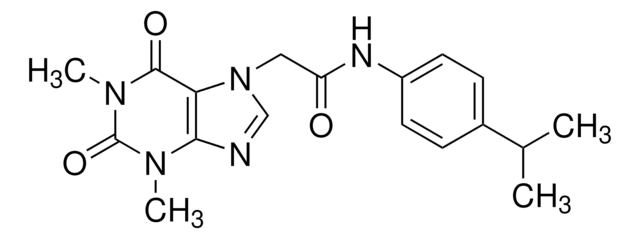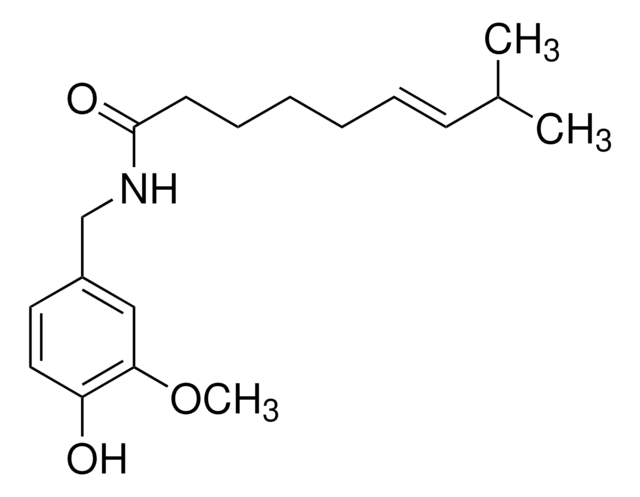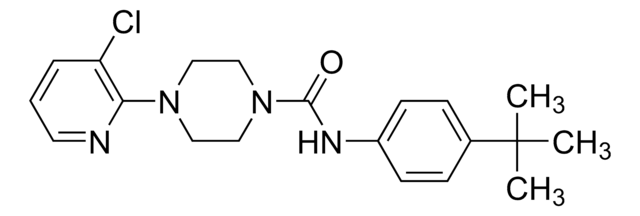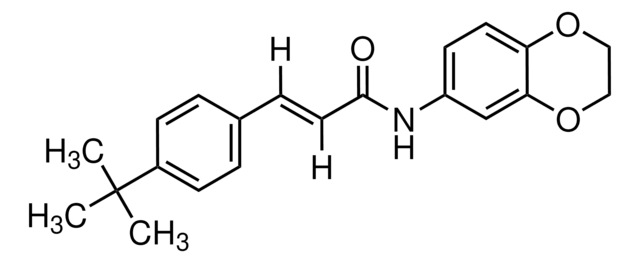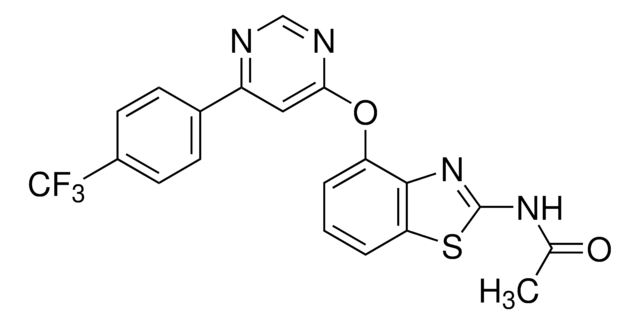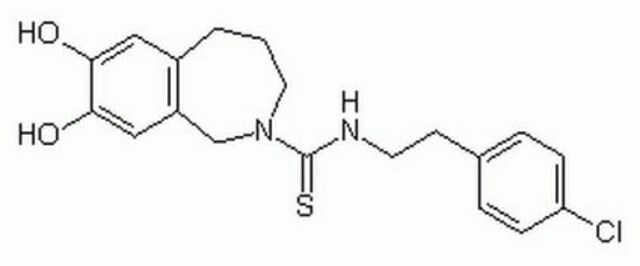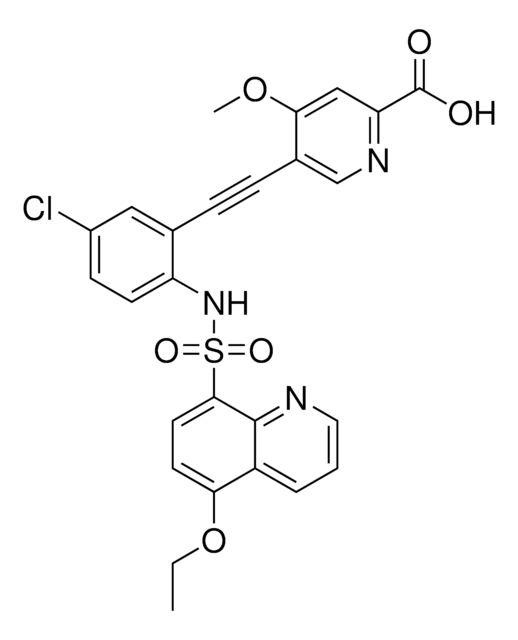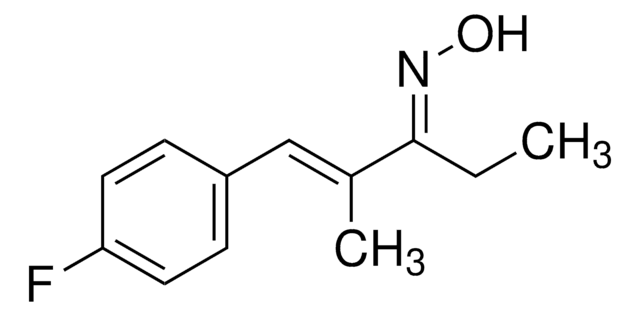S0441
SB-366791
≥98% (HPLC), powder
Synonyme(s) :
N-(3-Methoxyphenyl)-4-chlorocinnamide
About This Item
Produits recommandés
Essai
≥98% (HPLC)
Forme
powder
Couleur
white to beige
Solubilité
DMSO: 5 mg/mL, clear
Auteur
GlaxoSmithKline
Chaîne SMILES
COc1cccc(NC(=O)\C=C\c2ccc(Cl)cc2)c1
InChI
1S/C16H14ClNO2/c1-20-15-4-2-3-14(11-15)18-16(19)10-7-12-5-8-13(17)9-6-12/h2-11H,1H3,(H,18,19)/b10-7+
Clé InChI
RYAMDQKWNKKFHD-JXMROGBWSA-N
Informations sur le gène
human ... TRPV1(7442)
Catégories apparentées
Application
- to infer the in vitro and in vivo pharmacology of (E)-3-(4-t-butylphenyl)-N-(2,3-dihydrobenzo[b][1,4]dioxin-6-yl)acrylamide (AMG 9810)
- to study its effects on sodium hydrogen sulfide (NaHS) or capsaicin-induced contractile activity
- to study the inhibitory potency of phoneutria toxin (PnTx3-5) (native and recombinant) on various responses mediated by transient receptor potential cation channel subfamily V member 1 (TRPV1)
Actions biochimiques/physiologiques
Caractéristiques et avantages
Code de la classe de stockage
11 - Combustible Solids
Classe de danger pour l'eau (WGK)
WGK 3
Point d'éclair (°F)
Not applicable
Point d'éclair (°C)
Not applicable
Équipement de protection individuelle
Eyeshields, Gloves, type N95 (US)
Faites votre choix parmi les versions les plus récentes :
Certificats d'analyse (COA)
Vous ne trouvez pas la bonne version ?
Si vous avez besoin d'une version particulière, vous pouvez rechercher un certificat spécifique par le numéro de lot.
Déjà en possession de ce produit ?
Retrouvez la documentation relative aux produits que vous avez récemment achetés dans la Bibliothèque de documents.
Notre équipe de scientifiques dispose d'une expérience dans tous les secteurs de la recherche, notamment en sciences de la vie, science des matériaux, synthèse chimique, chromatographie, analyse et dans de nombreux autres domaines..
Contacter notre Service technique
